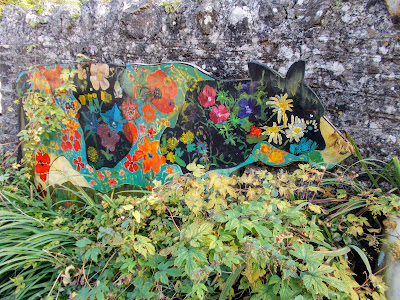Black Lamb and his friends, Shepton Mallet Roundabout
The rest of the flock, Shepton Mallet Roundabout
Lamb on an elaborately carved wooden bench, Butleigh Churchyard
Willow flock of sheep near Wellington
Wooden Cows, Chard
Half a cow! Farrington Gurney Farm Shop
Bull at the Sedgemoor Livestock Market
The winged bull of St Luke and a packhorse
St Michael's Church, Brent Knoll
Pig weathervane at Grabhams Farm near Wembdon
Wire pig sculpture in the garden of Coleridge Cottage. Nether Stowey
Gloucester Old Spot pig in the garden of Coleridge Cottage, Nether Stowey
Sow and five piglets on a roof boss, South Porch, St Cuthbert's Church, Wells
Ducks Puddle, East Quantoxhead
Ducks Puddle, East Quantoxhead
Lamb on the reredos of St Peter and St Paul's Church, Odcombe
Herd of cows, Main Road, Middlezoy
Sadly someone had parked their car in front of the mural, so I couldn't take a photo of the whole herd at once. I think this mural was painted by Simon Watson in 2013.
Rear end of a cow, Main Road, Middlezoy
Two more cows in Middlezoy
These 2 are located on the side of a house beside the track up to the church in Middlezoy
Cockerel on the East Coker village sign
Cockerel on the top of a signpost in East Coker
Cows on display outside Thorne's Butchers in West Street, Wiveliscombe
Wire sculpture of a goose in the garden of Coleridge Cottage, Nether Stowey
Goose in the garden of Coleridge Cottage, Nether Stowey
Colourful cows at Watchet Harbour
Colourful cows at Watchet Harbour
She arrived in Watchet Harbour during a storm in 2010 and liked it so much that she stayed until her death in October 2021
Cow and sheep with tractor, adjacent to the 'Welcome to Wiveliscombe' sign
Cows and sheep on a kneeler in St Mary Magdalene's Church, Exford
Wilbur the Pig, Orchard Shopping Centre, Taunton
He was one of the exhibits in the 2023 Somerset Trash Trail












































